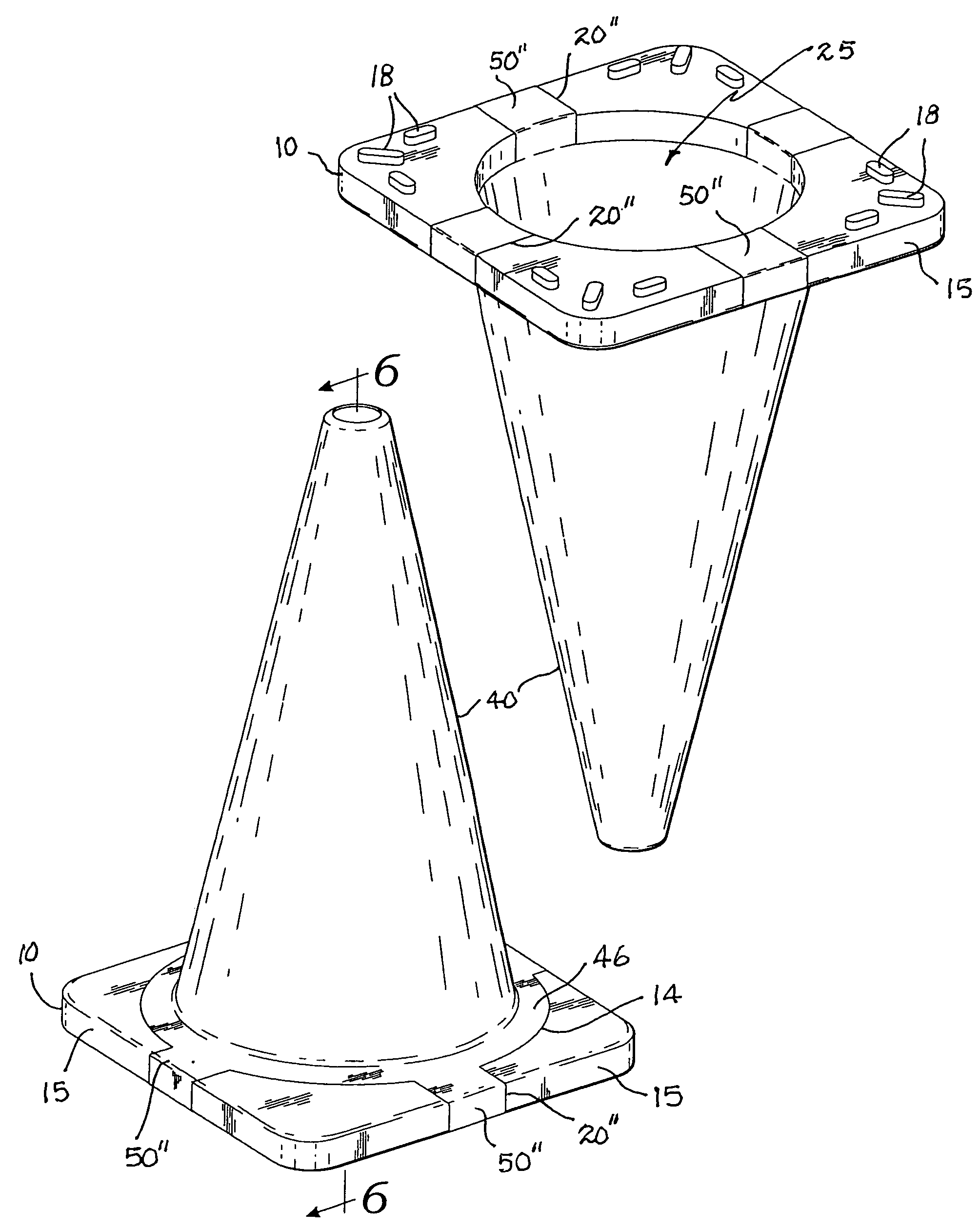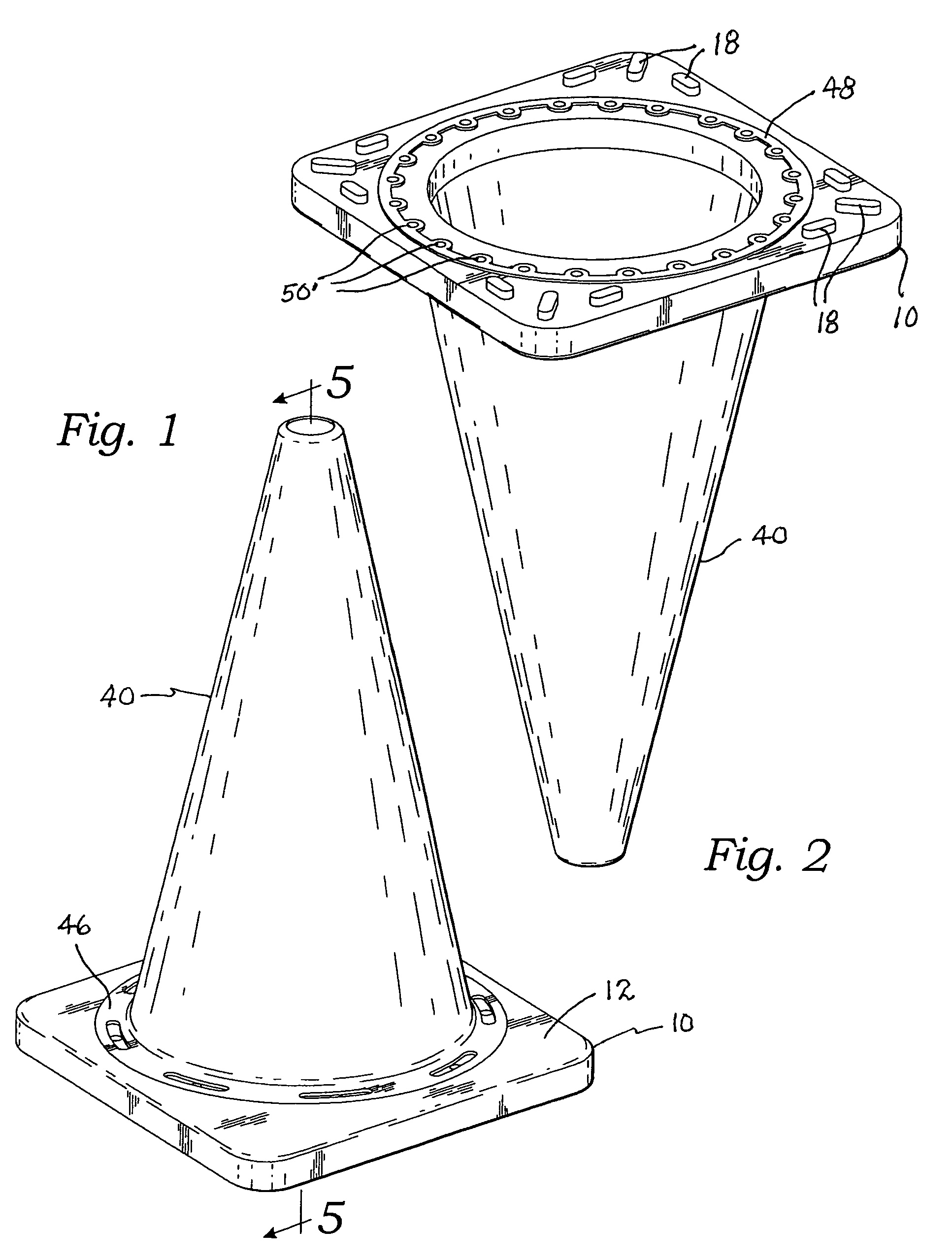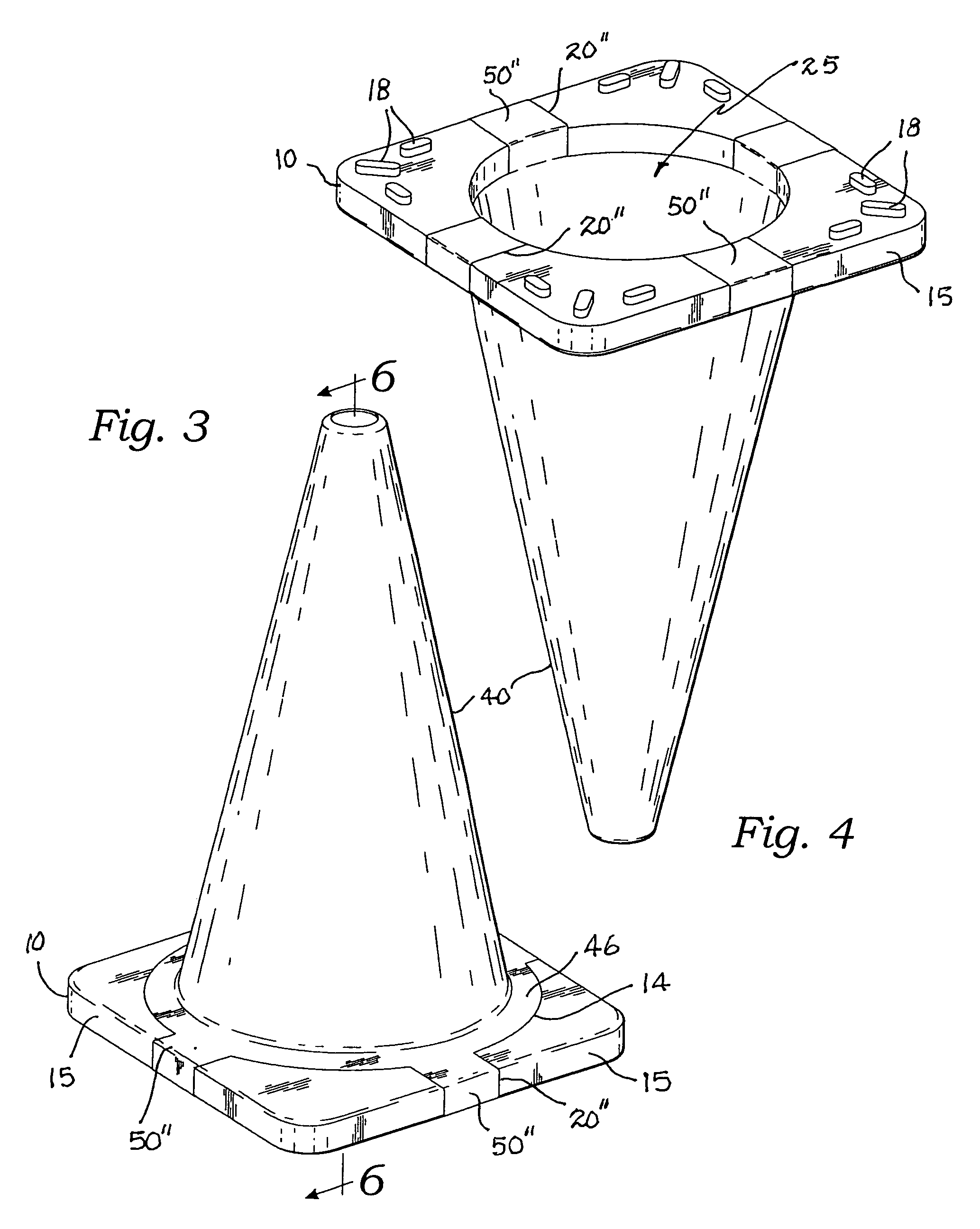Traffic cone apparatus and method of production
a technology of traffic cones and cones, which is applied in the direction of roads, roads, construction, etc., to achieve the effects of preventing damage to the tires of passing vehicles, different engineering characteristics, and high flexibility and durability
- Summary
- Abstract
- Description
- Claims
- Application Information
AI Technical Summary
Benefits of technology
Problems solved by technology
Method used
Image
Examples
first embodiment
[0035]The cone 40 is an injection molded right circular hollow cone defining an upright wall 42. The wall 42 terminates upwardly with an apex 44 and downwardly with an annular flange 46 which sits within the well 14 of the base 10. This configuration and arrangement is clearly shown in FIGS. 1, 2 and 5 in a first embodiment, and FIGS. 3, 4 and 6 in a second alternate embodiment.
[0036]In both the first and the second embodiments, a plurality of injection molded connectors referred to generally with numeral 50 are integrally joined with the annular flange 46 and extend within the plurality of apertures 20 thereby mechanically engaging the cone 40 with the base 10.
[0037]In the first embodiment, the apertures form a circular arrangement of through holes 20′ extending from the top surface 12 to the bottom surface 16, as best seen in FIG. 5. In this embodiment, the connectors 50 form a circular arrangement of plugs 50′ integral with the annular flange 46 and extending within the through h...
second embodiment
[0038]In the second embodiment, the apertures are preferably grooves 20″ as best seen in FIG. 3, extending from the well 14, across the top surface 14 and around side edges 15 of the base 10. In this embodiment, the connectors 50 are injection molded strips 50″ extending within the grooves 20″, around the side edges 15 of the base 10 and also through a central hole 25 in the base 10 and across the bottom surface 16 of the base 10 thereby encircling the base 10. Preferably, four such strips 50″ are used and collectively are molded integrally with a cone 40 thereby mechanically securing the cone 40 with the base 10.
[0039]The usage of “apertures” herein is taken from the American Heritage Dictionary of the English Language, Third Edition, in its broadest sense of the word, i.e., “an opening such as a hole, gap, or slit.” Under this definition, both the holes described in the first embodiment below, and the grooves described in the second embodiment are included as apertures. As well, a...
PUM
 Login to View More
Login to View More Abstract
Description
Claims
Application Information
 Login to View More
Login to View More - R&D
- Intellectual Property
- Life Sciences
- Materials
- Tech Scout
- Unparalleled Data Quality
- Higher Quality Content
- 60% Fewer Hallucinations
Browse by: Latest US Patents, China's latest patents, Technical Efficacy Thesaurus, Application Domain, Technology Topic, Popular Technical Reports.
© 2025 PatSnap. All rights reserved.Legal|Privacy policy|Modern Slavery Act Transparency Statement|Sitemap|About US| Contact US: help@patsnap.com



